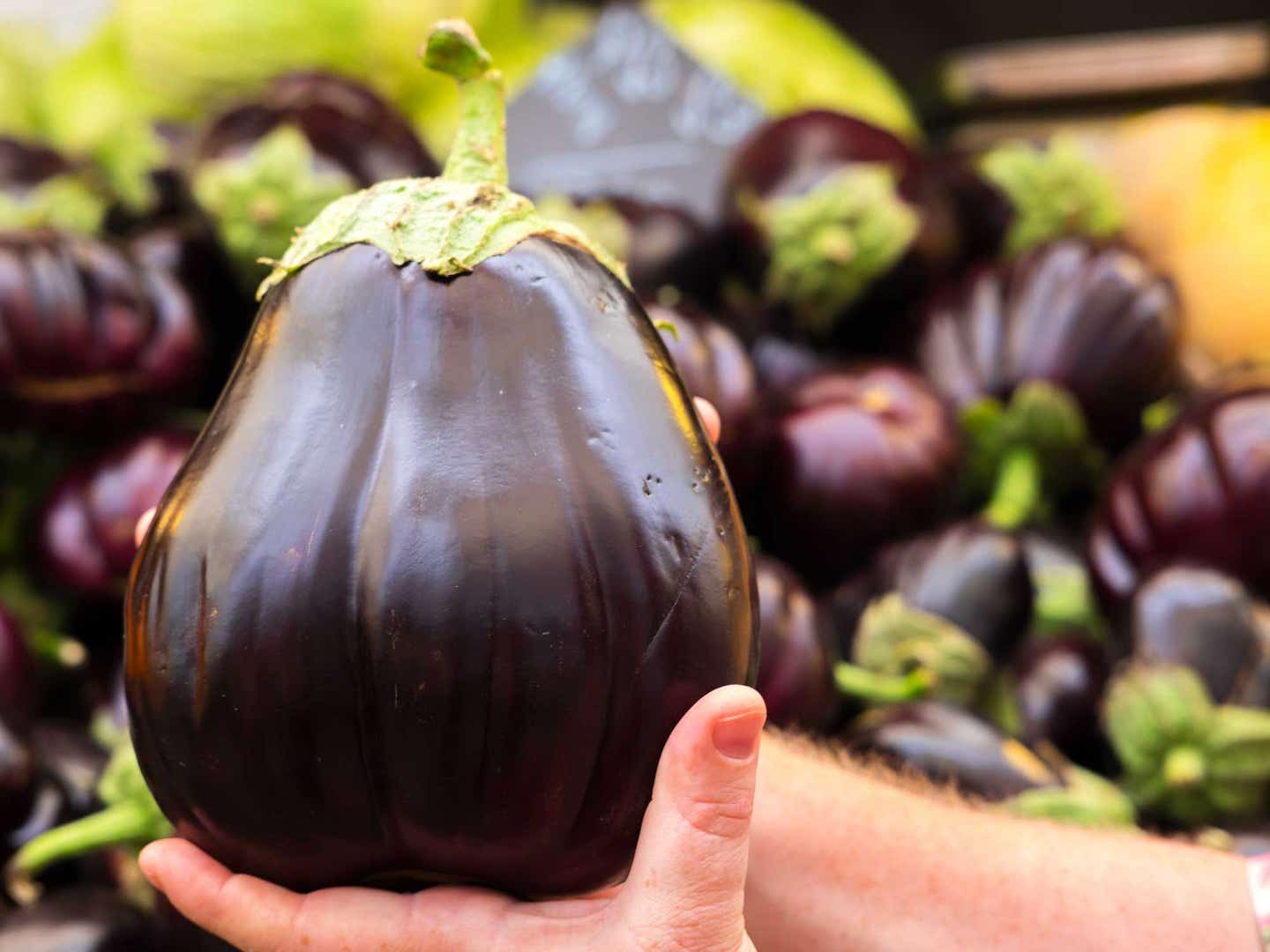
How to Navigate Jerusalem’s Massive Machane Yehuda Market
There are over 250 vendors and restaurants at the shuk; here’s how to hunt sour cherries while scarfing down mammoth cheese breads
Sit down at a Spanish tapas bar, sip a local Israeli beer, and watch observant Jews finish up their prayers. This is Thursday night at Machane Yehuda, where Jerusalem's many people produce a singularly diverse market.
As Israel took in Jews from all over the world, the market, or the shuk, became the place where immigrants, their food, and their traditions came together: Iraqi amba (pickled curried mango sauce) flanked by Yemenite bread, Georgian khachapuri (loaded cheesy bread) next door to an American burrito. Culinary tour guide "Fun Joel" Haber explains that unlike New York, where immigrants divided into enclaves, in Jerusalem, newly-arrived immigrants intermarried, shopped at the same market, and lived in the same area, weaving their food together.
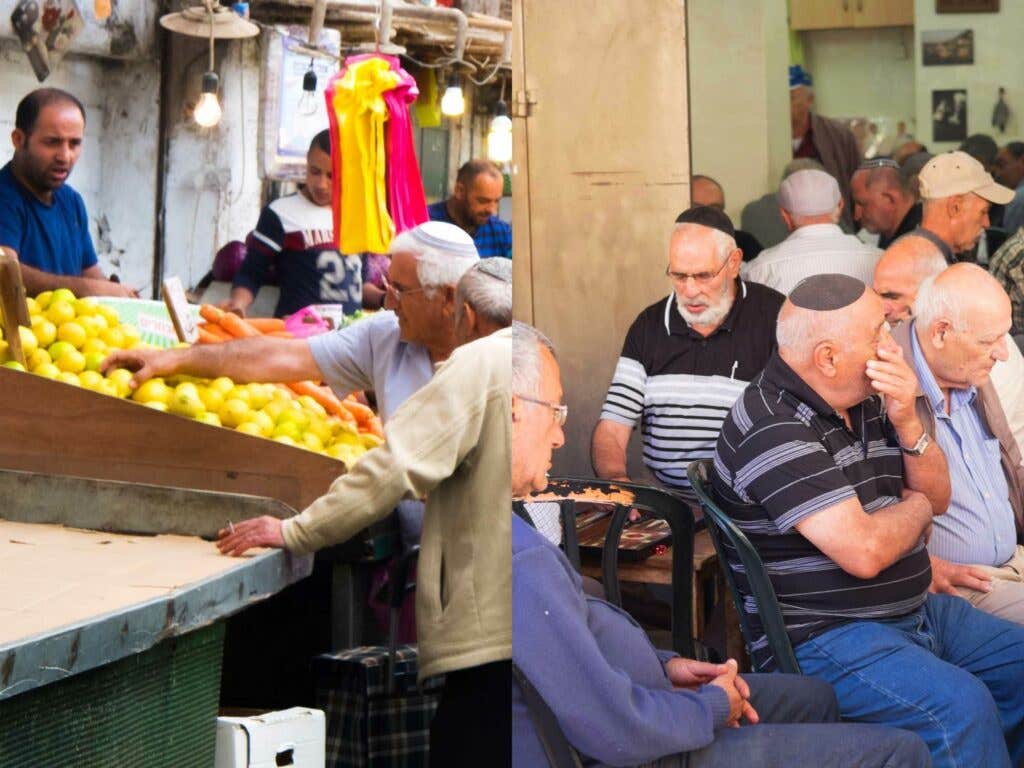
Like the city itself, Machane Yehuda merges the lives of shoppers and vendors, young and old, wealthy and poor, from all over the world. The traditional market has evolved with the city’s residents, providing as good a home to the elderly men playing backgammon on rickety tables in the afternoon as to the twenty-somethings listening to a DJ spin in the alleyways at night.
Eight years ago, Haber explains, the shuk closed at night. The stalls lay empty, contributing to the neighborhood's menacing reputation. Since then, street-style artist Solomon Souza received permission to paint portraits and murals on the garage-style doors of more than 150 shops, turning the shuttered businesses into a graffiti gallery (a mostly self-funded project). Bars—many featuring local brews—opened, and each day as the produce vendors, butchers, and spice shops close for the day, the bars open, giving the same space a second shift.
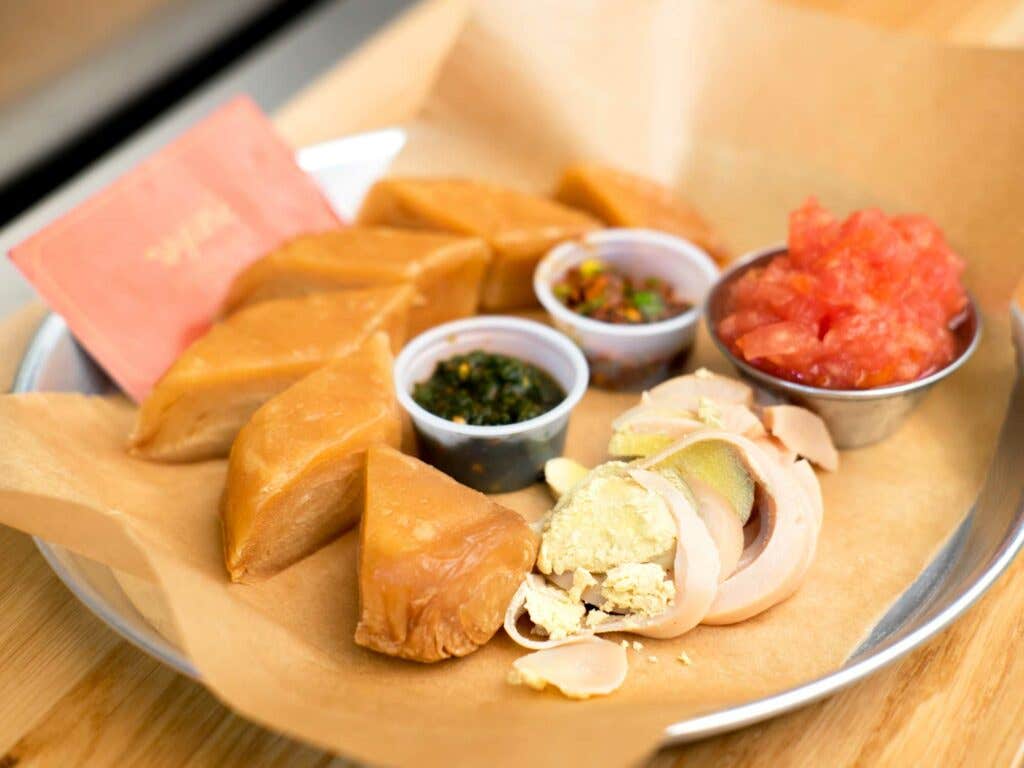
The market centers on the covered pedestrian alley of Etz Chaim and the open path with which it shares its name, but flows out into the surrounding area from Agripas Street on one side to Jaffa Street on the other. The location was first used as a market during the Ottoman period, in the late 19th century, then grew over time, with additions and enhancements every decade. Haber says that some of the stall owners complain about the growth of new sections of the market, mourning the increasing loss of traditional stalls. Produce stands and butcher shops close; restaurants and cellphone shops open in their place—you can even buy a stuffed poop emoji pillow in the market, if you wanted to. But, he points out, the market has been built piece by piece for over a century: each section was new at one time—and the other merchants complained about it then, too. The first covered shops began replacing the open market in the early 20th century, and new sections have been added or covered intermittently since then. As is the case in cities everywhere, change doesn't come without resistance.
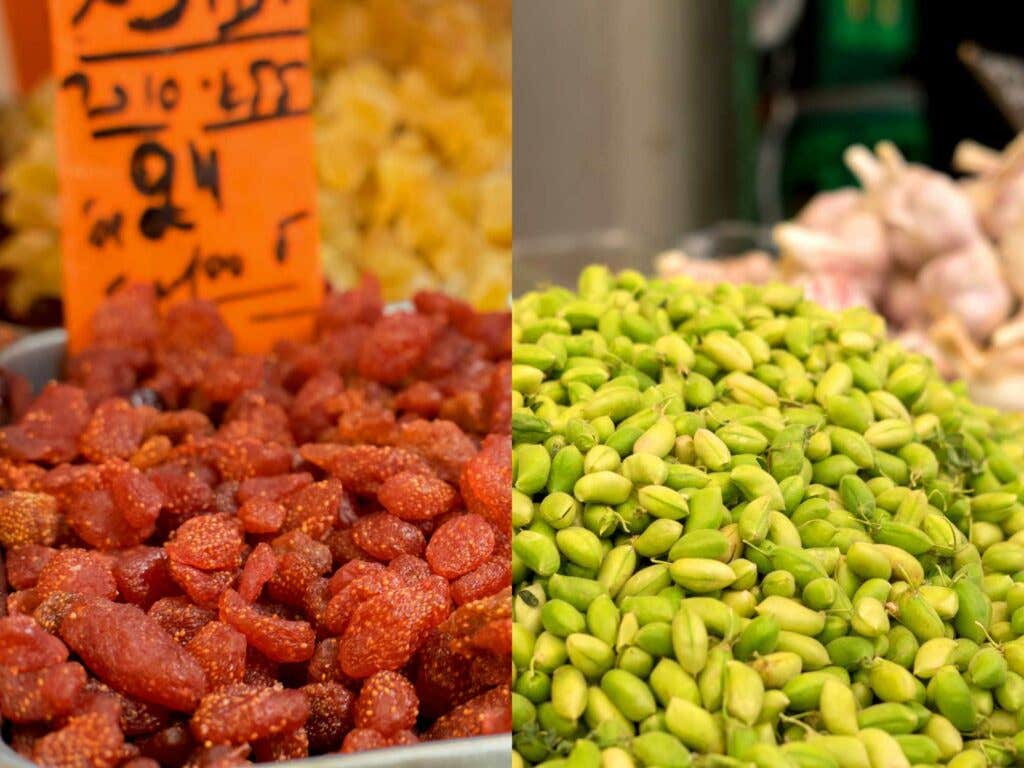
Nearly all of the produce sold at the shuk (and in Israel in general) is grown within Israel’s borders. Giant cabbage—as big as an American watermelon—and football-sized eggplants are available year-round. Cherries are a spring specialty, with figs and lychees soon to follow. You can always get cherry tomatoes, though—they were, after all, developed in Israel.
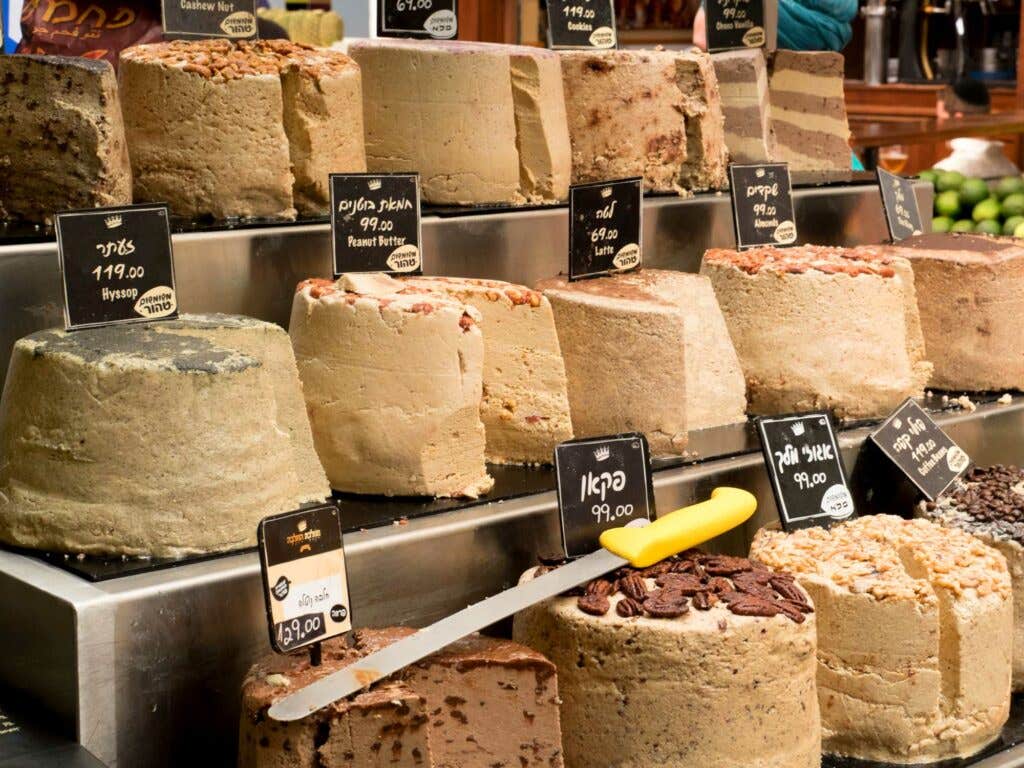
In the '90s, the first restaurant opened in the shuk, and today in and around the market you'll find every kind of food you can imagine, from Falafel Mula churning out crisp, hot balls of chickpea dough, to Jachnun Bar, serving Yemenite breads all night to hungry bar-goers. There's wasabi-flavored ice cream at Mousseline (it's good—more peppery sweetness than singeing heat) and Syrian-Jewish pastries filled with spiced mashed potatoes and slow-cooked meats that won the attention of Andrew Zimmern on a recent visit. Nearby, a restaurant named for the market, Mahaneyuda, enjoys a reputation as the best place to dine in town.
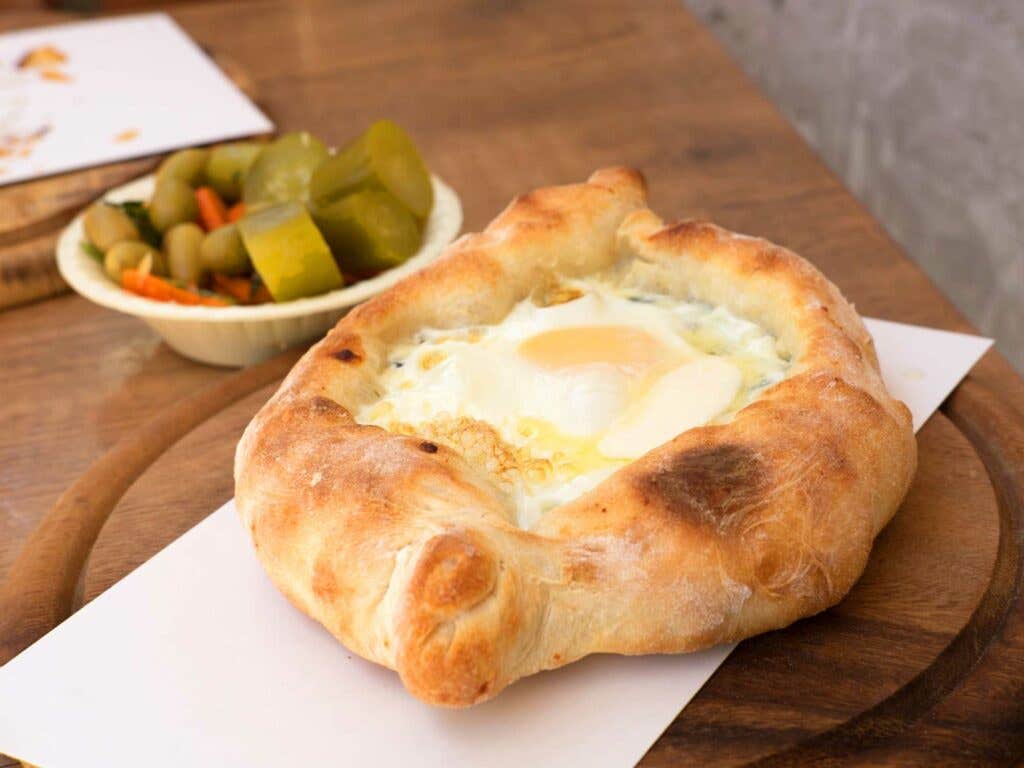
As the sun sets, a stand selling the brightest, most flavorful dried fruit shuts down. The giant mill crushing sesame seeds into tahini slows (you can buy that tahini, and the halvah made from it, across the way at Halvah Kingdom), and the popped-to-order rice cake machine stops shooting out its puffy disks. One by one, shopkeepers pull down the metal grates to reveal Souza’s colorful portraits: rabbis, prime ministers, anti-Nazi heroes, Jewish celebrities, and luminaries like Gandhi, Moses, Meir, and Einstein.
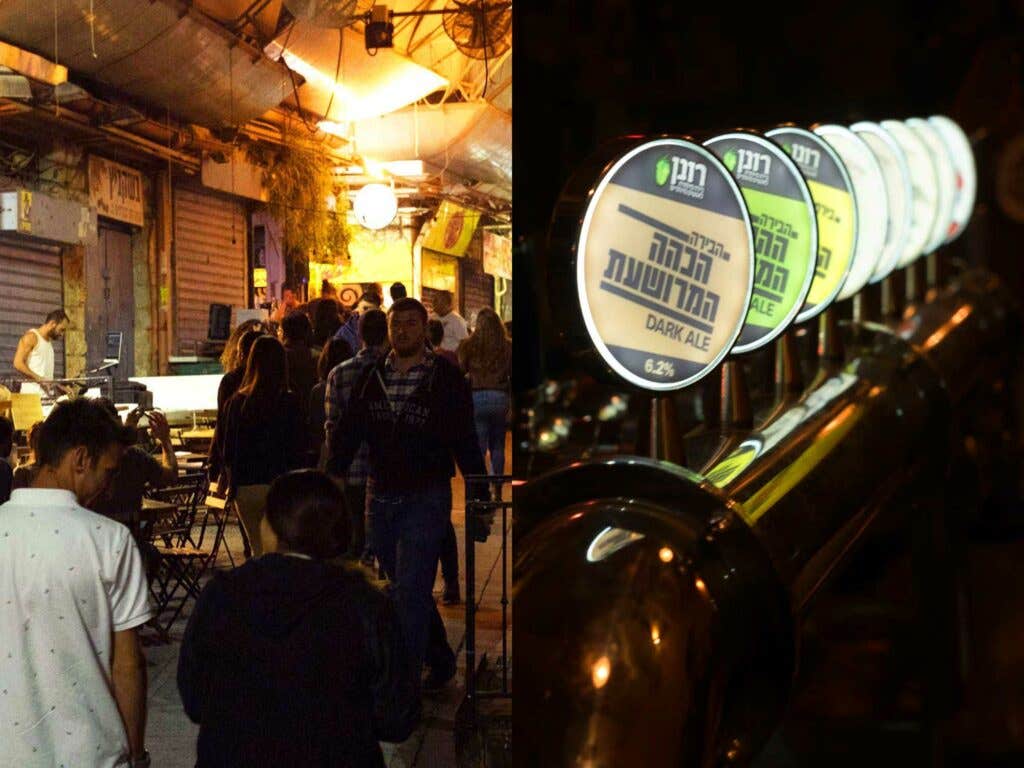
Meanwhile, other doors open, revealing tiny hallways barely wide enough for a person to walk between the stools and the wall. These bars aren’t really meant for sitting at. Rather, they spill tables and chairs out into the market walkways, in front of the now-closed stores. At Beer Bazaar, the tap list and wall of bottles include only Israeli craft brews. On a Thursday night—the beginning of the weekend—it’s hard to believe that this creative re-use of the space came about only in the last decade years. While groups fill tables as quickly as they’re put down and friends shout greetings over the din of the crowd, the last few grandmas shuffle out of the market, their bags bursting with produce.
Machane Yehuda Market
Machane Yehuda Street, Jerusalem
More Must-Visit Markets
Keep Reading
Continue to Next Story










